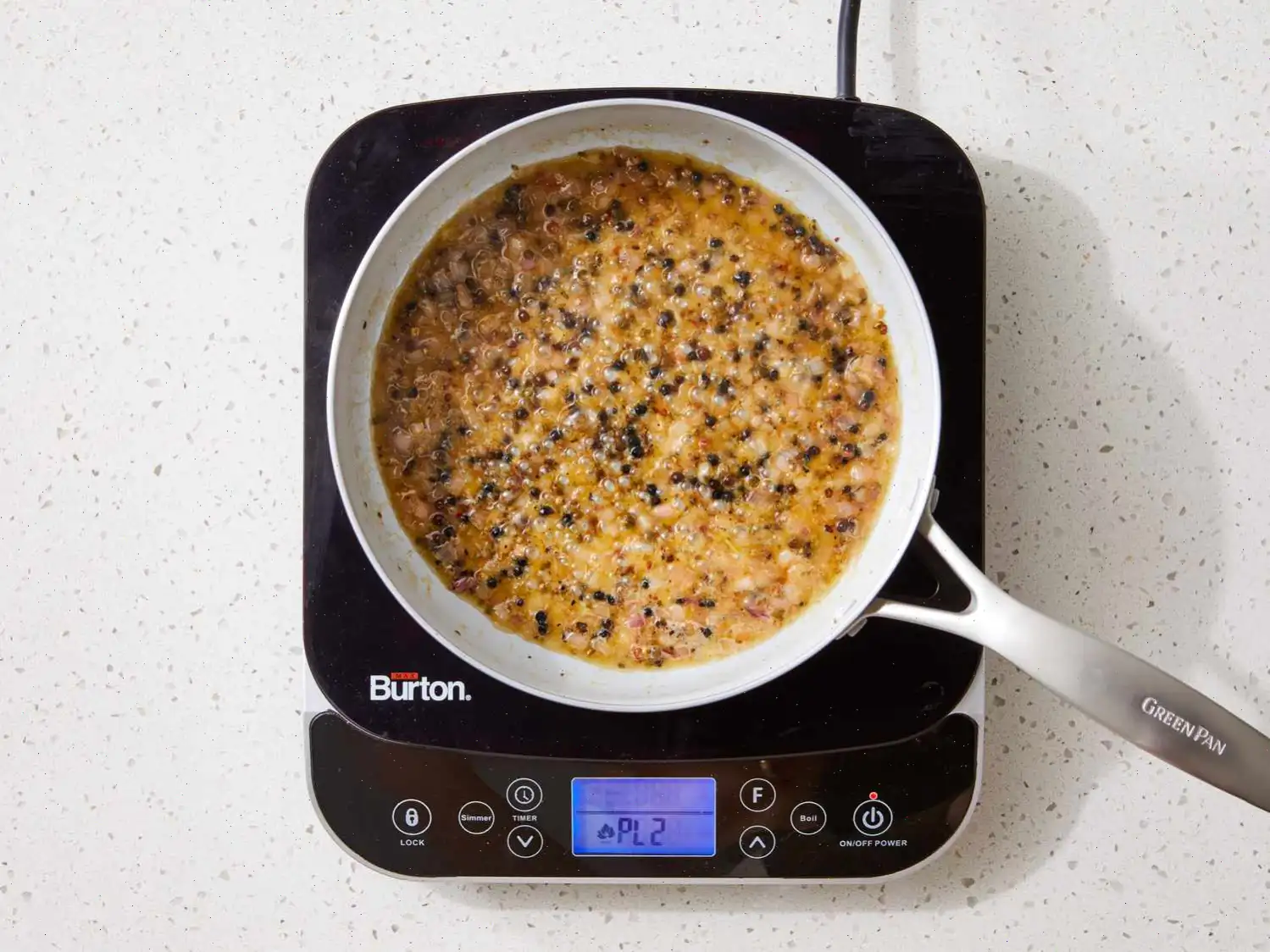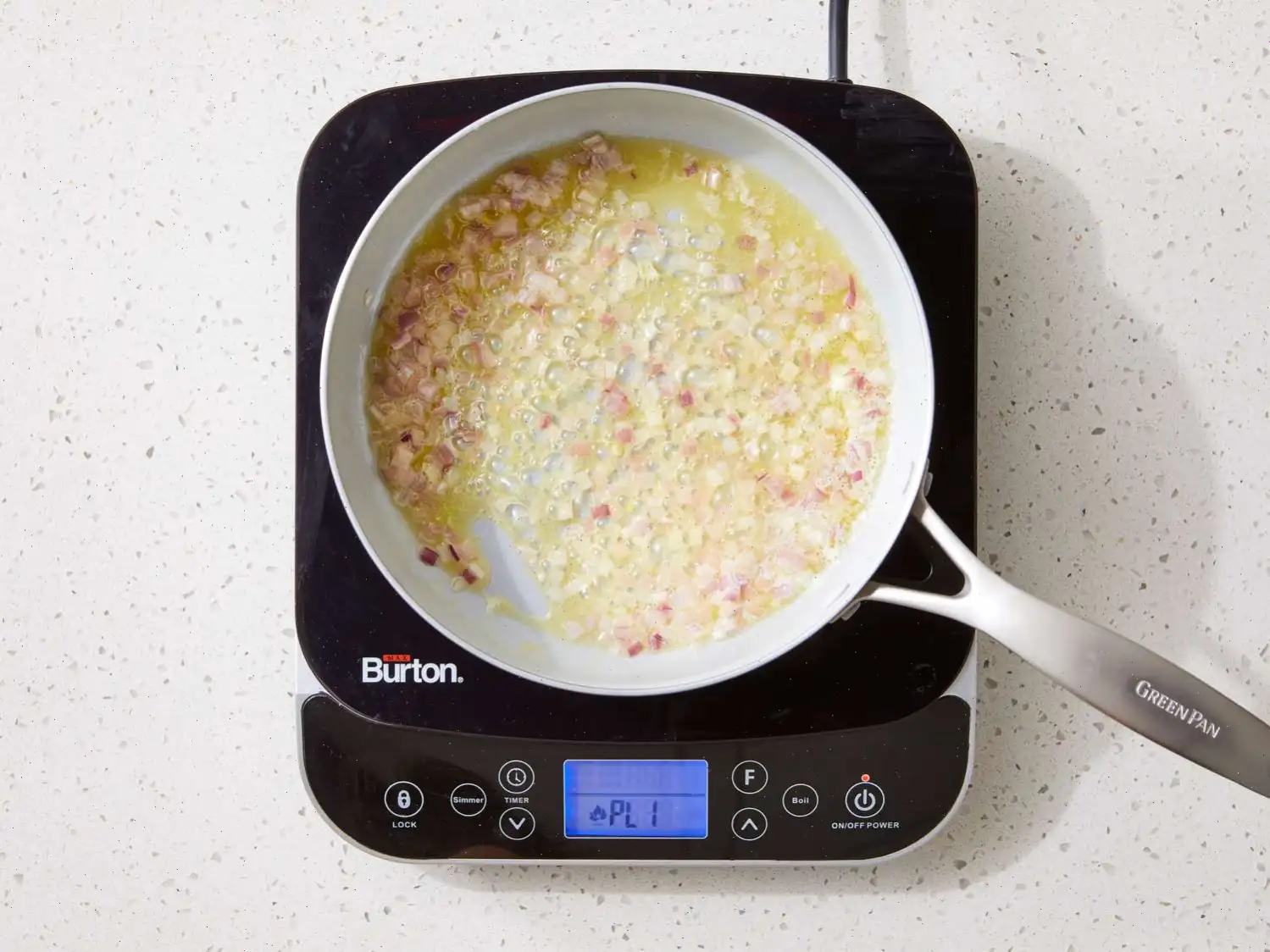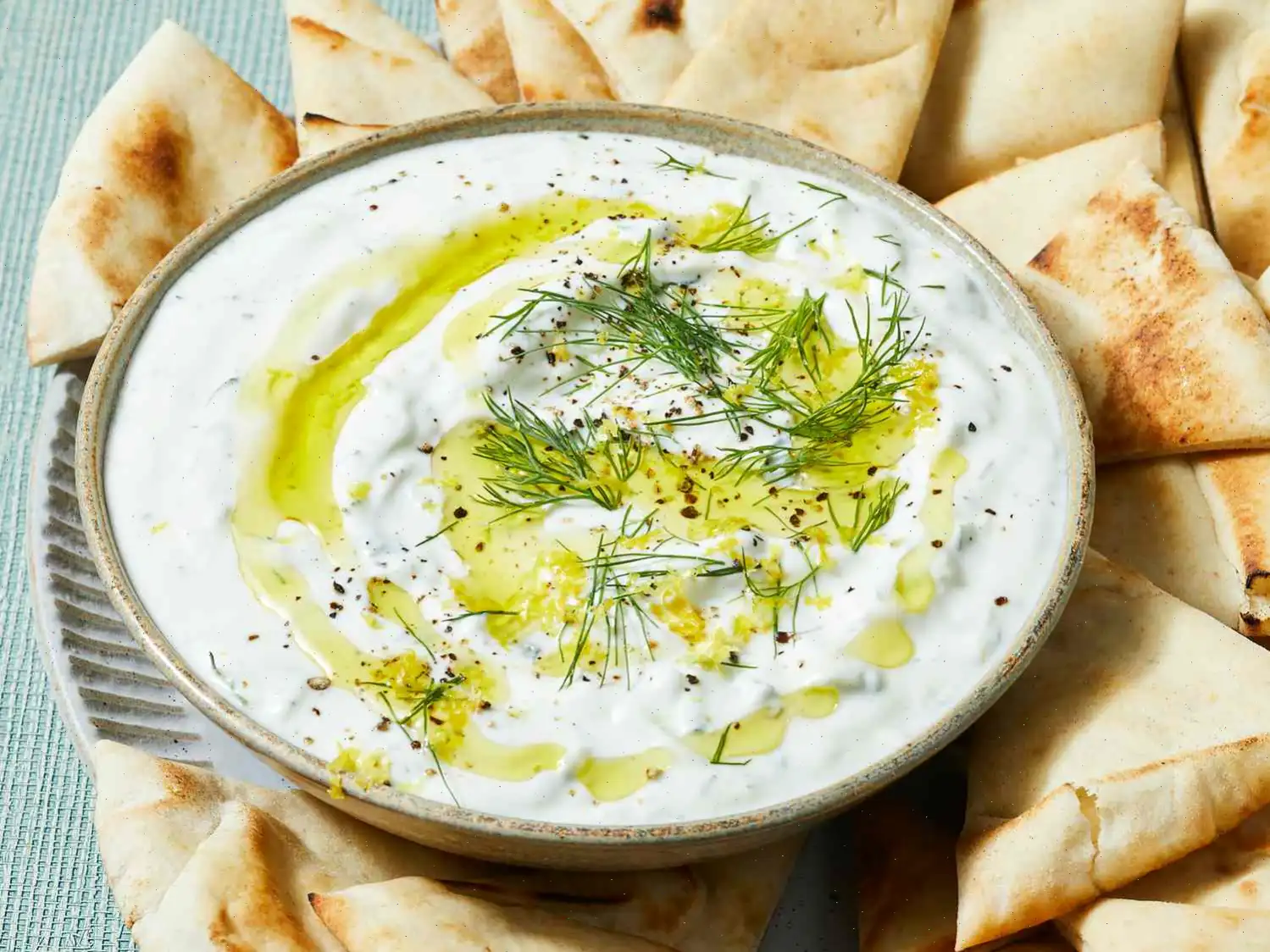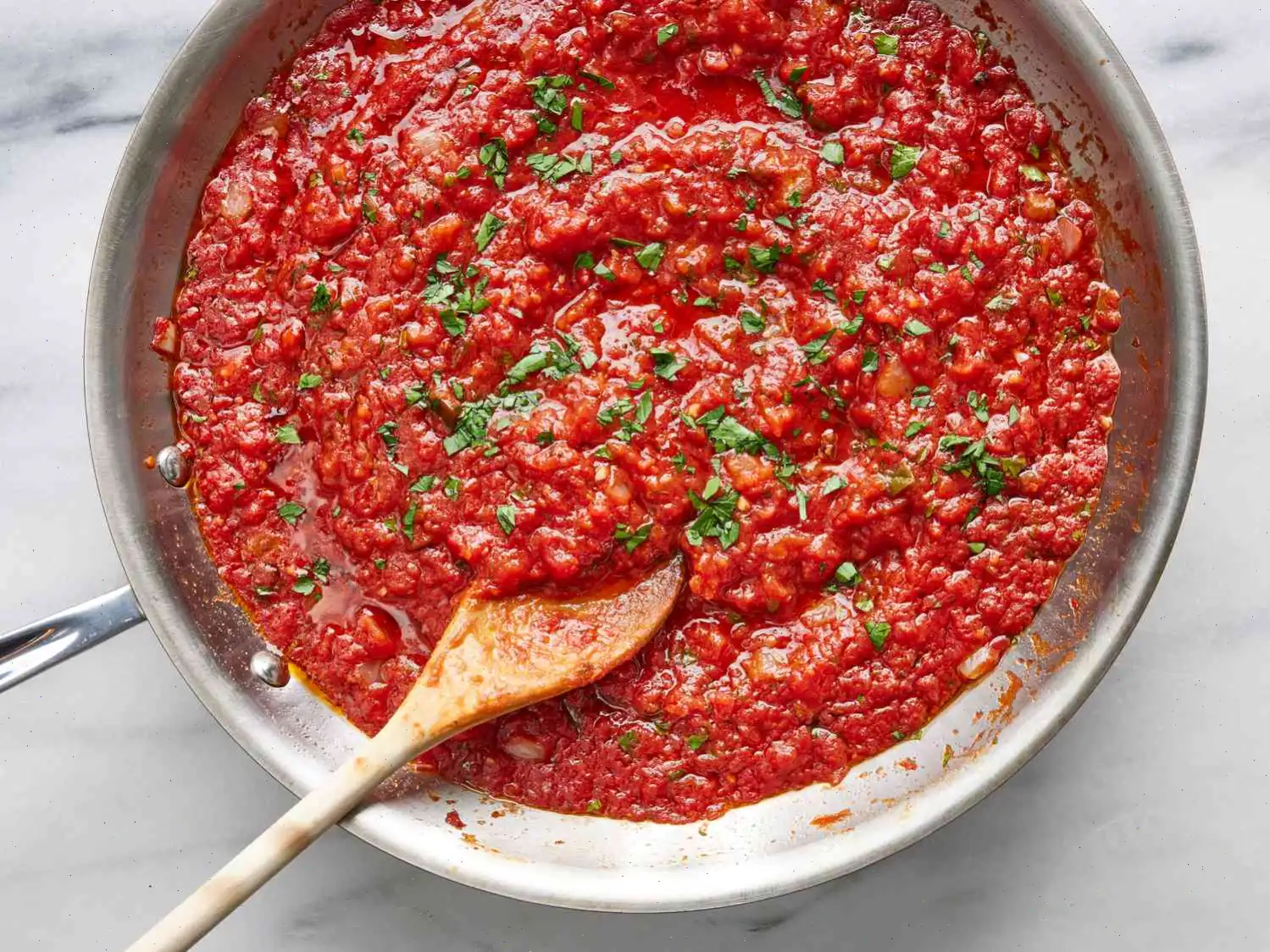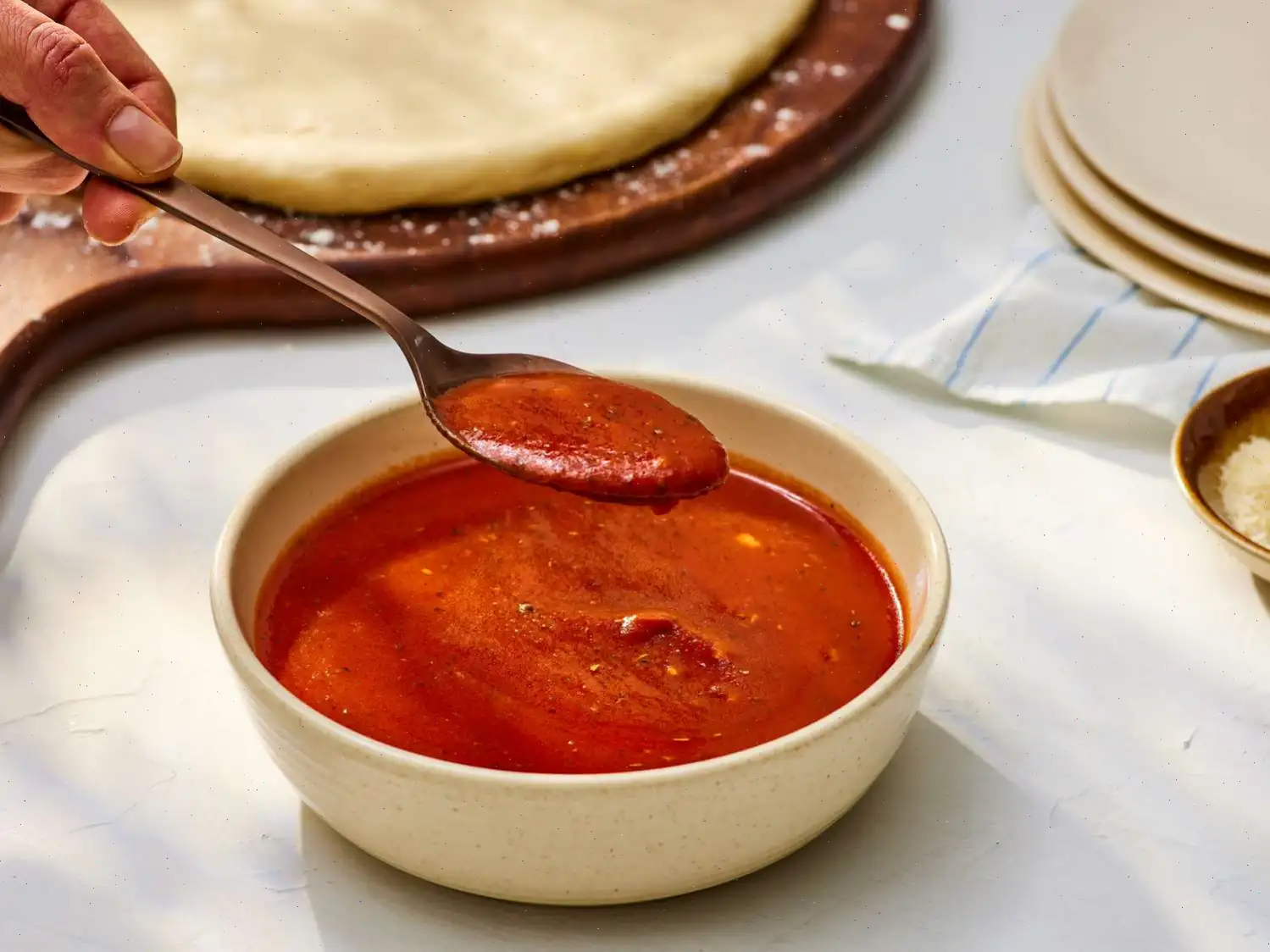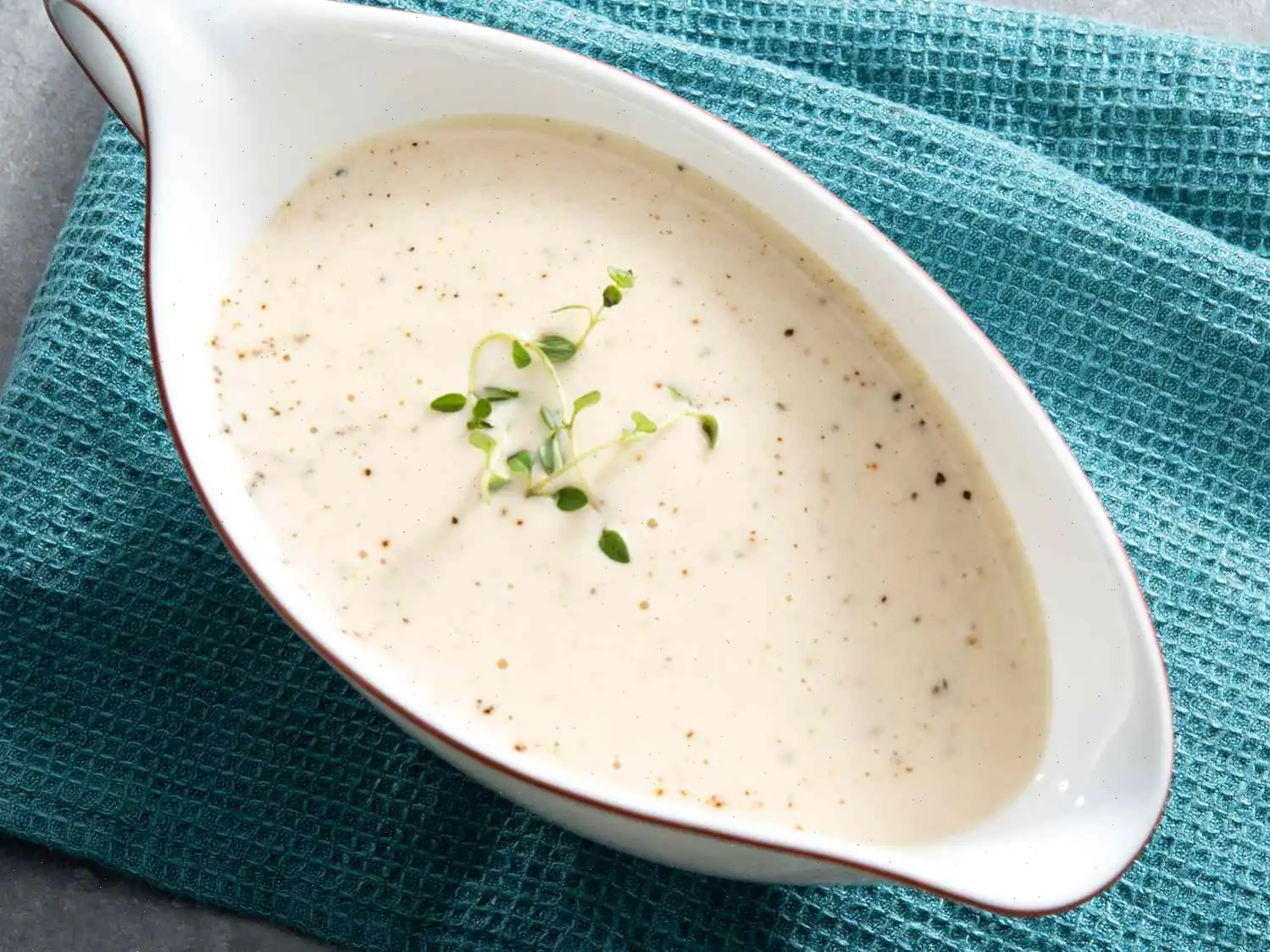
Peppercorn Sauce Recipe
This rich and creamy peppercorn sauce is a perfect companion to your favorite steak. The sauce brings out the best in the beef, with a slight kick from the peppercorns and a smooth finish from the cream.
Ingredients
- 2 tablespoons mixed peppercorns (or more to taste)
- 1/4 cup butter
- 1 shallot, minced
- 1/3 cup brandy or cognac
- 3/4 cup beef stock
- 1/4 cup heavy cream
Directions
- Step 1: Gather all the ingredients youll need to make the sauce. Having everything ready will make the cooking process smoother.
- Step 2: Lightly crush the peppercorns using a mortar and pestle, or if you dont have one, a rolling pin will do just fine. You want the peppercorns to break up, but not turn into a fine powder.
- Step 3: In a saucepan, melt the butter over medium-high heat. Once the butter is melted, add the minced shallot and saut it until it softens, about 3 minutes.
- Step 4: Add the crushed peppercorns and brandy (or cognac) to the pan. Bring the mixture to a boil, then reduce the heat and let it simmer rapidly until the brandy has almost completely reduced, about 2 to 3 minutes.
- Step 5: Now, pour in the beef stock. Bring the sauce back to a boil, then reduce the heat to medium. Let the sauce simmer for 3 to 4 minutes, or until it reduces by half.
- Step 6: Lower the heat to medium-low, then stir in the heavy cream. Let the sauce simmer gently until it thickens enough to coat the back of a spoon, about 3 to 4 minutes. Be sure to stir occasionally, and avoid letting it boil too vigorously.
- Step 7: Taste the sauce and adjust the seasoning with salt or more pepper if needed. Serve it hot over your favorite steak, and enjoy!
Cook's Note
If you're pan-frying your steak, you can make the peppercorn sauce right in the same pan. After removing the cooked steak, add the shallots and butter to the pan, stirring frequently to prevent burning. Once you add the brandy, be sure to scrape up the flavorful bits left in the pan from cooking the steak to infuse even more depth into the sauce.
If the sauce breaks or separates, simply add a splash of stock and whisk vigorously to bring it back together.
To reheat the sauce, add a little splash of cream and warm it over medium heat while stirring constantly.
Nutrition Facts (per serving)
| Calories | 214 |
|---|---|
| Total Fat | 17g (22% Daily Value) |
| Saturated Fat | 11g (54% Daily Value) |
| Cholesterol | 47mg (16% Daily Value) |
| Sodium | 188mg (8% Daily Value) |
| Total Carbohydrate | 7g (2% Daily Value) |
| Dietary Fiber | 1g (5% Daily Value) |
| Total Sugars | 2g |
| Protein | 2g (5% Daily Value) |
| Vitamin C | 2mg (2% Daily Value) |
| Calcium | 38mg (3% Daily Value) |
| Iron | 1mg (4% Daily Value) |
| Potassium | 213mg (5% Daily Value) |

The History and Origins of Peppercorn Sauce
Peppercorn sauce, often associated with classic European cuisine, traces its roots back to 19th-century France. Originally, it was created as a luxurious complement to high-quality cuts of beef, particularly steak. French chefs of the time sought a way to enhance the natural flavors of meat without overpowering them. By combining crushed peppercorns with butter, cream, and spirits like brandy or cognac, they achieved a rich, aromatic sauce that balanced heat and creaminess. The recipe gradually traveled across Europe, adapting to local tastes and ingredients, eventually becoming a staple in British steakhouse menus.
Regional Variations
While the French version uses brandy or cognac and a heavy cream base, British adaptations often incorporate beef stock to deepen the savory profile. In some regions, additional aromatics such as shallots, garlic, or Dijon mustard are added to enhance complexity. In Italy, a similar preparation called "salsa al pepe verde" emphasizes green peppercorns and sometimes a splash of Marsala wine. Each region modifies the balance of peppery heat, creaminess, and acidity, creating a uniquely local expression of the same fundamental sauce.
How Peppercorn Sauce Differs from Similar Sauces
Peppercorn sauce is often compared to Barnaise or Bordelaise, yet it remains distinct. Unlike Barnaise, which relies on tarragon, shallots, and a butter emulsion, peppercorn sauce emphasizes crushed peppercorns and cream, giving it a spicier, creamier texture. Bordelaise, on the other hand, uses red wine reduction and bone marrow, offering a deeper, richer flavor but less spice. The defining characteristic of peppercorn sauce is its robust, slightly pungent heat balanced by the silky creaminess that coats the steak.
Typical Serving Occasions
Peppercorn sauce is most commonly served with grilled or pan-seared steaks in both home kitchens and upscale steakhouses. It also pairs beautifully with roasted or seared poultry and occasionally with hearty root vegetables. In formal dining, it often accompanies a steak platter with sides such as roasted potatoes, seasonal vegetables, or a fresh salad, elevating the meal with its luxurious texture and flavor. Its presence signals a classic, indulgent dining experience.
Interesting Facts
- Peppercorn sauce gained widespread popularity in British steakhouses during the mid-20th century, becoming synonymous with fine dining comfort food.
- The choice of peppercornblack, green, or mixeddramatically changes the sauces intensity and aroma.
- Making the sauce in the same pan used to cook the steak enhances flavor by incorporating the meat's fond, the caramelized bits left behind after searing.
- In addition to brandy, some modern chefs experiment with whiskey or cognac for subtle variations in taste.
- The sauces creamy texture allows it to cling to meat, vegetables, or even pasta, making it versatile beyond traditional steak pairings.
You can listen to this recipe in AI audio format. Simply click the play button below to listen to the content in a format that suits you best. It’s a great way to absorb information on the go!
FAQ about Peppercorn Sauce Recipe
Comments
Kenneth Lewis
09/15/2023 11:20:40 PM
I prepared this dish for my husband on Valentine's Day, and it's exactly what he would choose at a steakhouse! Following the recipe notes, I cooked the steaks first and then prepared the sauce in the same pan while the steaks rested. This recipe was delicious and simple to make. Thank you for sharing this recipe!
Samantha Flores
01/25/2023 06:10:43 PM
Excellent taste, although it didn't thicken to our desired consistency. I plan to use a slurry next time to improve the texture.
David Sanchez
10/08/2024 05:34:12 PM
Excellent recipe, but I would consider grinding my peppercorns a bit finer next time as they were a bit too strong when left whole. The instructions were clear and easy to follow, and the dish complemented our grilled steaks perfectly. Thank you for sharing your recipe!


